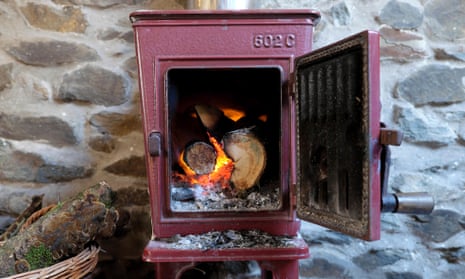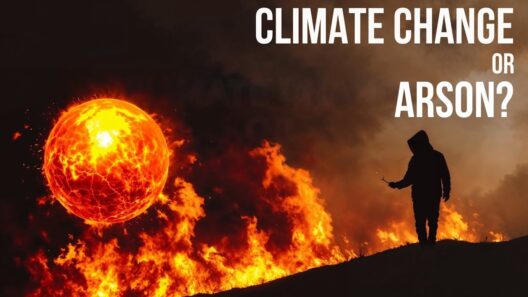In recent years, wood-burning stoves have witnessed a resurgence in popularity across many households. These devices are often lauded for their aesthetic appeal and the cozy ambiance they create, particularly during the chillier months. However, they also elicit significant debate regarding their environmental impact, especially in the context of climate change. This examination delves into whether wood-burning stoves contribute to global warming, addressing both the observable effects and the underlying reasons behind their use.
At first glance, burning wood appears to be a more environmentally friendly option compared to fossil fuels. The prevailing notion is that wood is a renewable resource, and when managed sustainably, it can be a carbon-neutral source of energy. This perspective is based on the premise that the carbon dioxide released during combustion is roughly equivalent to the amount absorbed by trees during their lifetime. However, this simplistic view belies a more complex reality.
When wood is burned, it releases not just carbon dioxide (CO2), but also a myriad of other pollutants, including particulate matter, volatile organic compounds (VOCs), and nitrogen oxides (NOx). These emissions contribute to air pollution, which has been linked to a range of health issues, from respiratory diseases to cardiovascular problems. Particulate matter, in particular, poses grave health risks, especially to vulnerable populations such as children and the elderly. Thus, while wood-burning stoves may seem appealing from a carbon perspective, they can indeed exacerbate local air quality problems.
Furthermore, the environmental ramifications of wood burning extend beyond immediate pollution. Deforestation and unsustainable harvesting practices threaten forest ecosystems worldwide. If wood is sourced from non-renewable timber or if forests are clear-cut to meet the demand for firewood, the long-term carbon storage capacity of these environments diminishes. Hence, the balance that once existed between carbon absorption and carbon release is disrupted, underscoring the precarious nature of relying on wood as a primary energy source.
It is essential to highlight that not all wood-burning stoves are created equal. Traditional open fires and older wood stoves tend to be much less efficient and emit higher levels of pollutants compared to modern, EPA-certified devices. These advanced models are designed to combust wood more thoroughly, resulting in reduced emissions and higher heat efficiency. Nevertheless, they still contribute to greenhouse gas emissions, albeit to a lesser extent than their predecessors. Thus, one must consider both the type of stove and the wood used when evaluating the overall environmental impact.
Another critical aspect to consider is the carbon cycle itself. While it is true that trees sequester carbon dioxide during their growth, the timeline for new seedlings to reach maturity and reinstate their carbon storage capability can span decades. In densely populated areas, where demand for firewood may exceed sustainable practices, the immediate release of CO2 from burning wood overtakes the benefits of future growth. This scenario exacerbates atmospheric CO2 levels and contributes to global warming.
There’s also a behavioral element in the fascination with wood-burning stoves. For many, the act of using a wood stove embodies a rustic charm, invoking images of simpler times and a connection to nature. This allure can obscure the environmental implications of such practices. The romanticized idea of wood burning as a traditional, sustainable practice often ignores the complexity of contemporary environmental issues. People may be compelled to overlook the ecological consequences, drawn instead by the aesthetic and nostalgic attributes of wood-burning heating.
Moreover, the choice of wood itself adds an additional layer of complexity to the discussion. Different types of wood vary significantly in their combustion qualities, affecting both emissions and efficiency. Hardwoods, such as oak and maple, typically burn hotter and cleaner than softwoods, such as pine and fir. Thus, individuals who indulge in the wood-burning experience must remain astute about their fuel sources to mitigate negative environmental impacts. Educating users on the significance of wood selection and proper stove operation can lead to a more conscientious use of these heating systems.
Government regulations are gradually evolving in response to the ecological concerns associated with wood-burning stoves. Increased scrutiny and mandates aimed at reducing emissions from new stoves are becoming commonplace in various jurisdictions. These measures often include stricter emissions standards and incentives for adopting cleaner heating technologies. Such initiatives aim to strike a balance between consumer preferences for wood heat and the overarching imperative of protecting the environment.
The climate conversation is inherently multifaceted. While individuals frequently point to renewable energy sources as pivotal to mitigating climate change, it’s clear that wood-burning stoves introduce both benefits and drawbacks. The debate hinges on juxtaposing the romantic notion of using renewable firewood against its pollution potential and implications for global warming.
Ultimately, if society is to address the urgent threats posed by climate change, it must foster a critical examination of all heating practices. This requires a move toward sustainable consumption patterns, mindful of impacts on air quality and carbon emissions. Individuals and policymakers alike should engage in dialogues that disentangle the enticement of wood-burning from its environmental ramifications. Only then can we hope to navigate the path toward a truly sustainable future.







